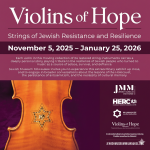Unruly bits and bytes at the outer limits of music
Milwaukee Laptop Orchestra, MILO and TORCH at Friday's Unruly Music Festival.
The title – Unruly Music – set the expectations for the three concert festival held over the weekend at Marcus Center’s Uihlein Hall. Contemporary composition (or improvisation) that pushes the barriers of musical performance may be startling, even unpleasant to those unaccustomed. But these concerts are intended to explore new avenues.
This is particularly true when electronic tools replace or augment conventional instruments, as they did Friday evening, in a program featuring the Milwaukee Laptop Orchestra and two new ensembles with some MILO members.
Many sounds are produced conventionally, others unconventionally on conventional instruments – as when an electric guitar was “played” by twisting the base of a glass Coke bottle against the strings. But the exploration begins with what is done with that initial sound. Electronic reshaping of the input can create vastly different outputs. When a computer is used to create the initial sound, the options open up further, creating a soundscape never heard before. Shaping that sound world in creative ways – beyond creating noise – is the challenge to the process.
MILO (also on the web here) has been a regular Unruly presence. The ensemble is an integral part of the educational mission of the Electro-Acoustic Music Center at the University of Wisconsin-Milwaukee. Friday evening, nine players worked with laptops, tablets, electric guitars, a clarinet and electronically augmented voice. The audience were voyeurs to a large group exercise in improvisation. The music progressed through several cycles, starting simply with whispered vocals or plucked guitar or short clarinet riffs, then built as others added synthesized or reprocessed sounds. Tempos and volume increased until, as the sound got more chaotic, it quickly withdrew to rev up again.
These works are often difficult to follow. Those with electronic devices do little to signal what they are doing. It is often unclear where a sound is originating or who is shaping it further. The result is surely more satisfying to the players, who know the parameters manipulated by the members and their relative effect, than to the audience. They face the challenge of improvised collaboration and are more aware of when it succeeds or feels flat. They barely acknowledge the audience at all.
This concert was more satisfying because of the introduction of two additional ensembles – one all electronic and the other working almost entirely with familiar instruments.
TORCH involved eight players. They all stood at the front of the stage with identical iPads. The power of these tablets lay in the program – a very flexible synthesizer set up to process sound along a wide variety of dimensions. Some parameters were programmed as a series of presets. Others could be manipulated live by touching or twisting the iPad. Multiple touches responded to location, direction and relationship to one another, providing a player with an unconventional but ultimately intuitive instrument. Turning the iPad triggered internal sensors programmed to modify the sound or increase its volume. Each iPad began with different presets. Some produced pure keyboard like tones, but others bubbled, stretched sounds or rapidly changed pitch. A motif or rhythmic pattern could be passed around the group, or individuals could riff on their iPad and challenge another to respond.
This performance worked more for me than did MILO’s part of the program. For one thing, I could tell who was playing what. The “flavors” built into each iPad became obvious (although they could be changed during the performance). I could see players shaping sounds by moving their fingers. Occasionally, one could make out the visual cues on the tablet screens. In addition, improvisation was being “conducted.” Kevin Schlei controlled participation by selecting one or several players, allowing individual or group themes to develop, intensify or abruptly stop.
Schlei wrote the program, TC-11 – you can buy it on iTunes. A user review praises the flexibility of this tool but warns that to be productive one should be prepared to invest time in mastering the large number of options Schei’s app allows.
The sound world created by this group was more familiar, although the interpretation was contemporary and the “unruly” edges could create as much chaos as sections of the MILO presentation. “Conductors” can improve improvisation by balancing the creative inspiration of individual players with a vision that shapes the overall performance.
The Participants
MILO: Chris Burns, David Collins, Elliot Patros, Kevin Schlei, Steve Schlei, Jim Schoenecker, Amanda Schoofs, Erik Schoster, Sebastian Ignacio-Valenzuela Rojas, Seth Warren-Crow.
TORCH: Chris Burns, Warren Enstrom, Mary Francis, Bill Heinrichs, Brian Lynch, Adam Murphy, Grant Richter, Schlei.
Great Lakes Improvising Orchestra: Linda Binder, Burns, Collins, Jeff Klatt, Steve Nelson-Raney, Jon Mueller, Rick Ollman, Kevin Schlei, Steve Schlei, Schoenecker, Schoofs, Warren-Crow.






















